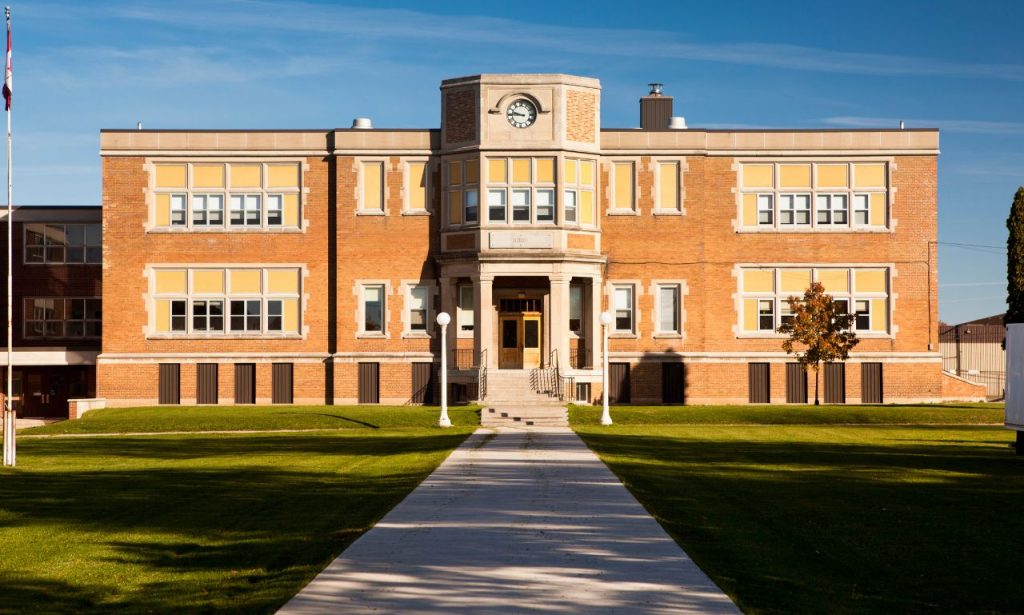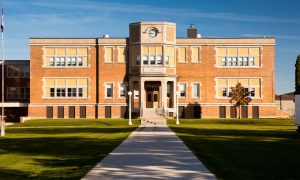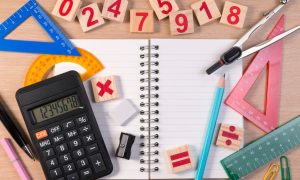Today’s high school students face a rapidly evolving job market. They need more than just academic knowledge to succeed after graduation. Schools must transform into environments that foster career readiness. I’ve worked with dozens of educational institutions to create these spaces. The results speak for themselves. Students who learn in career-ready environments show higher engagement and better post-graduation outcomes. This article explores five essential ways to create career-ready high school spaces that genuinely prepare students for their future careers. These practical approaches will help educators build programs that connect classroom learning with real-world success. Let’s break down what really works.
Teach Study Skills and Research Techniques

Students need strong research abilities to thrive in college and in their careers. Many high schoolers struggle with finding reliable information and evaluating sources critically. Teaching these skills requires deliberate instruction and regular practice opportunities.
Effective research techniques include teaching students to use academic databases and scholarly sources. They should learn to distinguish between credible and questionable information online. Schools must prioritize information literacy across all subject areas. Teachers can assign projects requiring students to cite multiple sources and explain their relevance.
Research assignments should gradually increase in complexity throughout high school. Freshmen might start with guided research questions and curated source lists, while seniors should conduct independent research with minimal guidance. This progression builds confidence and competence.
I once consulted for a struggling school district in the Midwest. Despite good grades, their students performed poorly on college research assignments. We implemented a cross-curricular research program with consistent standards across departments. Within two years, college professors reported noticeable improvements in their graduates’ research abilities.
Note-Taking Strategies
Note-taking is fundamental to academic and professional success. Students need explicit instruction in various note-taking methods. Cornell notes that it works well for linear subjects like history or biology. Mind mapping helps with brainstorming and connecting complex concepts.
Digital note-taking tools offer advantages for organization and searchability. However, research suggests that handwritten notes improve information retention for many students. The best approach combines both methods depending on the learning context.
Teachers should model effective note-taking and provide feedback on students’ notes. This guidance helps students develop personalized systems that work for their learning styles. Regular note reviews reinforce the habit of revisiting information for deeper understanding.
Teach Written and Oral Communication Skills
Communication skills consistently rank among employers’ most desired qualities in new hires. Written communication requires clarity, organization, and awareness of audience needs. Students should practice various writing forms beyond academic essays.
Business emails, technical reports, and persuasive proposals all require different approaches. Assignments should include real-world writing scenarios with specific audiences and purposes. Feedback should address both technical correctness and effectiveness of communication.
Oral communication skills develop through structured practice and constructive feedback. Class presentations develop confidence and public speaking abilities. Small group discussions build conversational skills and active listening.
Technology integration enhances communication skill development. Video recording presentations allows students to self-assess their delivery. Online discussion forums extend classroom conversations and help students practice written communication.
Public Speaking Opportunities

Public speaking remains one of the most valuable yet intimidating skills students need. Regular opportunities to speak before groups gradually build confidence. Start with small group presentations before progressing to larger audiences.
Speech competitions and debate clubs provide motivated students with advanced speaking opportunities. Even brief classroom sharing sessions help develop baseline comfort with public speaking. Teachers should create safe environments where mistakes become learning opportunities.
Feedback on public speaking should balance encouragement with specific improvement suggestions. Recording presentations lets students see themselves from the audience’s perspective. This self-observation often reveals distracting habits students didn’t realize they had.
Teach “Soft” Skills Like Critical Thinking and Collaboration
Technical knowledge becomes outdated quickly. Soft skills remain valuable throughout careers. Critical thinking involves analyzing information, identifying assumptions, and drawing logical conclusions. These skills transfer across all disciplines and career paths.
Classroom activities should regularly challenge students to think critically. Case studies, ethical dilemmas, and open-ended problems develop these abilities naturally. Teachers should ask thought-provoking questions rather than seeking single correct answers.
Collaboration prepares students for team-based work environments. Group projects teach compromise, task management, and interpersonal communication. Students learn to leverage diverse strengths and navigate disagreements productively.
Communication and Collaboration
Effective collaboration depends on clear communication between team members. Students must learn to express ideas clearly and listen actively to others. They should practice giving and receiving constructive feedback professionally.
Digital collaboration tools prepare students for modern workplace communication. Projects using shared documents, video conferencing, and project management software build relevant skills. These experiences mirror real workplace collaboration scenarios.
Conflict resolution skills develop through guided practice during collaborative work. Students should learn strategies for addressing disagreements productively. These experiences build emotional intelligence that serves them in all relationships.
Leadership and Initiative
Leadership opportunities help students discover and develop their potential. Student government, club leadership, and project team roles build valuable experience. Even rotating classroom responsibilities provides leadership practice in small doses.
Initiative means taking action without being prompted. Students demonstrate initiative by identifying problems and proposing solutions. Teachers can encourage this quality by rewarding self-direction and creative problem-solving.
The most effective leadership development balances guidance with autonomy. Students need clear expectations and feedback while retaining decision-making responsibility. This approach gradually builds confidence in their leadership abilities.
Encourage Independent Learning
Self-directed learning prepares students for lifelong career development. Independent projects allow students to explore topics aligned with their interests. This autonomy increases motivation and engagement with academic content.
Educators should gradually release responsibility to students over time. Early high school might include more structured guidance. Senior year should feature substantial independent work with teacher mentorship.
Technology provides powerful tools for independent learning. Online courses, educational videos, and interactive simulations expand learning opportunities. Students should become comfortable finding and evaluating resources independently.
Self-Assessment Skills
Students need practice evaluating their work against established standards. Self-assessment builds metacognitive awareness and realistic self-perception, which help students continue improving without constant external feedback.
Rubrics and examples of excellent work provide reference points for self-assessment. Students should regularly compare their work to these standards and identify specific strengths and areas for improvement.
Regular reflection builds the habit of continuous improvement. Students should document their learning progress and set goals. This process mirrors the professional development practices they’ll encounter throughout their careers.
Cultivate a College-Going Culture
Schools must create environments where post-secondary education feels attainable and desirable. College awareness should begin early in high school, and students need exposure to various educational pathways and requirements.
Campus visits make college feel concrete rather than abstract. Virtual tours provide access when physical visits aren’t possible. Guest speakers from local colleges can share insights about student experiences.
Financial planning demystifies college costs and funding options. Students need realistic information about college expenses and potential returns. FAFSA completion assistance removes barriers for first-generation college students.
College and Career Counseling
Effective counseling helps students align educational choices with career aspirations. Counselors should maintain current knowledge about emerging career fields and help students connect interests and aptitudes to potential career paths.
Individual planning meetings ensure personalized guidance for each student. These sessions should review academic progress and post-graduation plans. Early intervention helps students adjust course selections to match evolving goals.
Career interest inventories provide helpful starting points for exploration. Students should understand these as tools for consideration rather than definitive answers. Multiple assessment approaches offer more comprehensive insights.
Provide Real-World Learning Experiences
Theoretical knowledge gains meaning through practical application. Internships and job shadowing connect classroom concepts to workplace realities, allowing students to see firsthand how professionals apply skills in real contexts.
Community partnerships create opportunities for authentic learning experiences. Local businesses can provide project challenges based on actual workplace needs. Students produce work for real audiences rather than just their teachers.
Industry certifications provide tangible credentials before graduation. These qualifications demonstrate specific skills employers recognize, giving graduates immediate advantages in competitive job markets.
Work-Based Learning

Structured work experiences build professional skills and workplace awareness. Students learn about appropriate behavior, communication, and time management. They develop references and networks for future opportunities.
Project-based learning simulates workplace contexts within classroom settings. Students collaborate to solve complex problems with defined deliverables. These projects develop both technical and interpersonal skills simultaneously.
Guest speakers from various industries provide insights into career realities. Students hear firsthand accounts of career paths and workplace expectations. These connections help students envision themselves in professional roles.
Teach Time Management and Organizational Skills Like Keeping a Planner
Effective time management underlies success in both academics and careers. Students need explicit instruction in planning and prioritizing responsibilities. These skills don’t develop automatically without intentional practice.
Digital and paper planning systems both offer valuable benefits. Students should experiment with different approaches to find what works. The specific system matters less than consistent habit formation.
Breaking ample projects into manageable tasks prevents procrastination. Students should practice creating realistic timelines with built-in flexibility. This planning approach reduces stress and improves work quality.
Building Organizational Habits
Physical and digital organization systems help students manage information efficiently. Students should develop personalized systems for tracking assignments and resources. Consistent routines eliminate wasted time searching for materials.
Regular planning reviews keep students on track with long-term goals. Weekly check-ins help adjust priorities based on changing circumstances. This habit builds self-regulation and responsibility for outcomes.
Conclusion
Creating career-ready high school spaces requires intentional design and implementation. The five approaches outlined here provide a comprehensive framework for school improvement. Each strategy builds different aspects of student preparedness for future success.
Schools that implement these approaches see measurable improvements in student outcomes. Graduation rates increase while college remediation needs decrease, and employers report greater satisfaction with graduates’ workplace readiness.
Students benefit from these approaches regardless of their specific career paths. The skills I developed transfer across industries and positions. Career-ready high schools prepare students for first jobs and lifelong career navigation.
Educational leaders must prioritize career readiness as a core mission. Academic knowledge alone no longer guarantees student success after graduation. The most effective schools integrate career preparation throughout all programs and activities.
Also Read: SAT Math Tips & Tricks
FAQs
Communication, critical thinking, collaboration, time management, and self-direction consistently rank highest among employer demands.
Basic career awareness should start in middle school, with more focused preparation throughout high school.
Absolutely. The same skills prepare students for college academic demands and workplace success afterward.
Technology should serve as both a learning tool and a subject of instruction for digital workplace skills.




